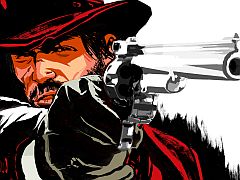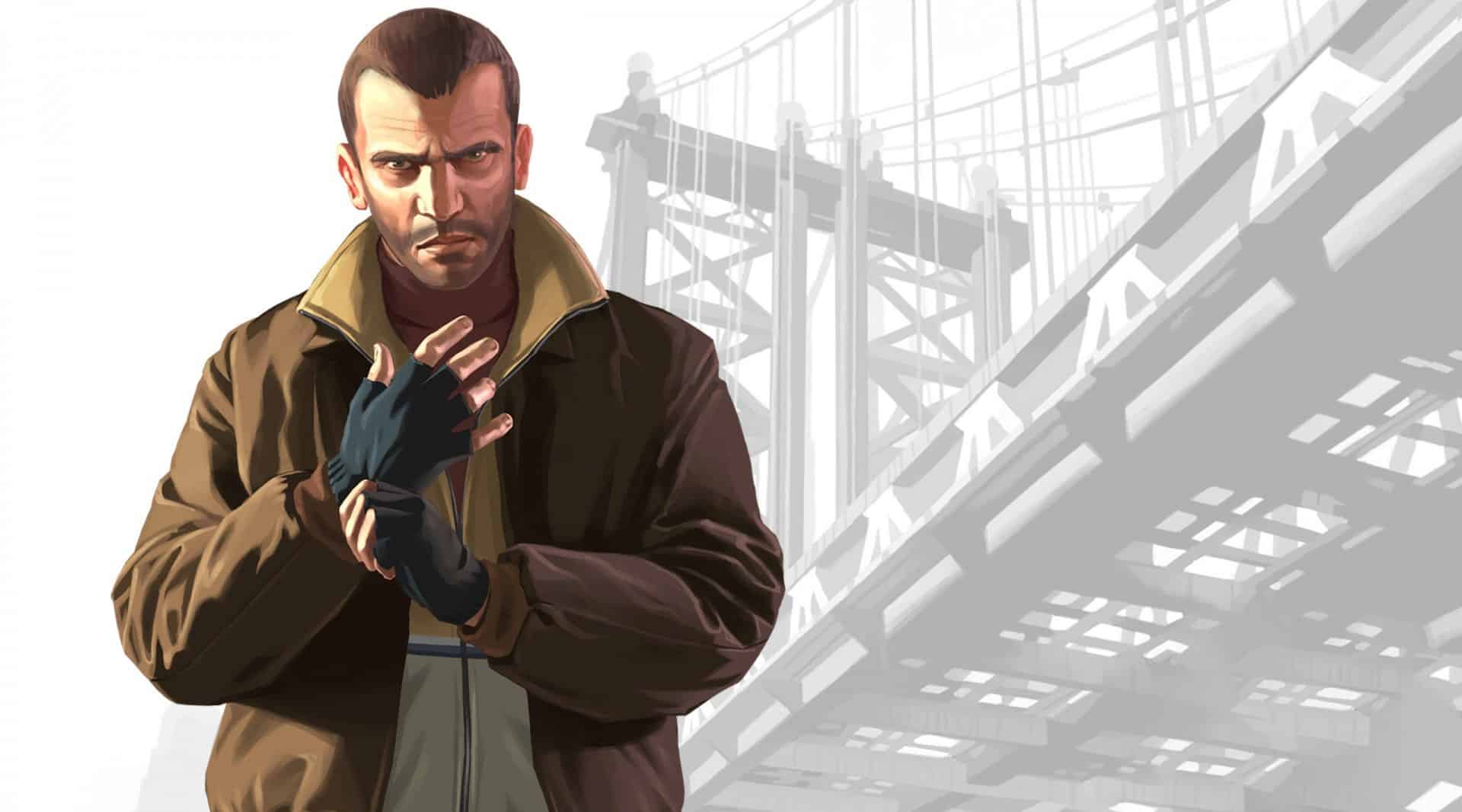You can trust VideoGamer. Our team of gaming experts spend hours testing and reviewing the latest games, to ensure you're reading the most comprehensive guide possible. Rest assured, all imagery and advice is unique and original. Check out how we test and review games here
Red Dead Redemption is riding high in the charts, but it won’t be too long before people start pondering about Rockstar’s next project. Max Payne 3 and LA Noire are both somewhere on the horizon, but at some point in the not-too-distant future, there’ll inevitably be a GTA 5. With that in mind, I thought it would be interesting to explore a few of the ways in which RDR has improved on the structure of GTA IV – lessons that Rockstar could take forward into its next game. What follows is entirely my opinion, of course – so feel free to call me a knob.
Spoiler note: while I’ve aimed to avoid spoilers wherever possible, the following article does discuss the general themes and tone of Red Dead Redemption. There’s nothing big in here, but be warned nonetheless.
Keep the open world open
/https://oimg.videogamer.com/images/ea7d/reddeadopen.jpg)
GTA IV’s Liberty City was a milestone in open world game design: beautiful, memorable and absolutely packed with intricate detail. Aside from the satirical representation, it was also a very impressive approximation of New York – but this achievement had an unfortunate side effect: it was an extremely busy place. As enthralling as it was to steal a sports car and drive up to the gleaming lights of Star Junction, the sheer volume of traffic could be a real drag at times – particularly in the latter stages of the game, when missions had you travelling right across the city to get to the fun stuff.
The vast plains of Red Dead Redemption represent an even larger (and better looking) playground, but the key difference is space. Traffic jams are obviously no longer a problem, and because you have the freedom to literally break away from the beaten path, you feel that much more inclined to do so. There’s always something on the horizon – a rocky outcrop to explore, a wild animal to hunt, or an NPC to torment or rescue. Due to the open design of the landscape, these distractions are clearly visible, and whenever you decide to return to your primary business, it’s easy to get back on the right track. Fine, you might get unexpectedly snuffed out by a bandit or a sneaky cougar, but you’ll never have that classic GTA problem where you bump into a cop car and inadvertently start a disastrous, five-star chase.
If anything, Red Dead’s problem is that it’s almost too big: by my reckoning it takes almost seven minutes of playtime to ride from one end of Mexico to the other. Still, that’s what the fast travel options are there for – and I think it speaks volumes that lots of gamers seem to be proudly avoiding these shortcuts. Rockstar would do well to emulate this openness for GTA 5, so perhaps it’s time to return to a San Andreas-style world design?
Let the player choose their side quests
/https://oimg.videogamer.com/images/5f1f/reddeadside.jpg)
Niko’s incessantly-ringing phone was one of the major focal points for GTA IV’s critics. While the mobile itself was an inspired idea, even the most patient of us went mad with the endless requests for trips to the bar / bowling alley / your girlfriend’s shagpad. The real problem was it felt like these activities were always being forced upon you: the mini-games themselves were actually quite fun, but thanks to the constant whingeing of Roman and other friends, we all developed a sort of furious Pavlovian response. If you approach a GTA IV veteran and whisper the word “bowling” in their ear, they’ll probably try to force a tenpin up your Tommy Vercetti.
While the mini-games in Red Dead Redemption are generally slicker and better designed than their Liberty City predecessors, you’re only forced into them during a couple of story missions. Side quests also take a lenient approach, allowing the player to start an assignment and then come back to it whenever they like – even after the end of the main game. When you throw in the ambient challenges like hunting and searching for treasure, you swiftly end up with masses of entries on your “to-do” list. RPGs have been doing this kind of thing for years, and it works extremely well. The side missions become part of the wider world, part of the journey you take with John Marston. And again, thanks to the open landscape, there’s always something nearby that demands a second look.
There’s nothing wrong with playing nice
/https://oimg.videogamer.com/images/e295/reddeadnice.jpg)
Rockstar has a decent track record when it comes to creating memorable protagonists, but with John Marston it’s done the unthinkable: the publisher let us play as a nice guy. Sure, you’re still able to cover your face and go on a killing spree, but when you do so it usually feels like you’re breaking character – and Read Dead Redemption is all about the role play.
On paper the differences between Marston and Niko Bellic aren’t all that pronounced: They’ve both got a history of violence, they’re both manipulated by the characters that surround them, and they’re both flawed in some way. But while Niko’s temper and damaged nature could be quite alienating at times (and I say that as someone who really liked the guy), Marston becomes more and more endearing as time moves on.
Yes, he’s a killer, but he’s also a family man – and unlike Niko, Carl Johnson, Tommy Vercetti or even Claude Speede, he doesn’t sleep with prostitutes.
The GTA games have always suffered a slight disconnect when it comes to their antiheroes, in that they’re always murderous bastards, but we’re supposed to like them. Red Dead Redemption doesn’t entirely avoid this problem – it’s hard to justify the mission where John murders 30-odd miners just so he can steal something from them – but by the end of the story, you’ll certainly have a fair bit to think about. GTA IV explored similar themes of violence and responsibility, but there’s no doubt which games reaches a more satisfying conclusion.
GTA 4’s nay-sayers often accuse the game of lacking a sense of humour – an odd criticism, given that the whole thing is essentially a work of satire. RDR arguably plunges to even darker, bleaker depths, but despite the fact that it generally isn’t as funny, it feels like a much warmer game. Why? Because it has a heart, and that heart’s name is John Marston. I don’t know what Dan Houser has in mind for the script of GTA 5, but he’ll be hard pushed to give us a more likeable lead character.
Let everyone play
/https://oimg.videogamer.com/images/c3bc/reddeadall.jpg)
After all the serious talk of the last three entries, my final point may seem a bit light – but I think it’s arguably just as significant. The basic control scheme for Read Dead Redemption is a distinct improvement on GTA – especially when it comes to weapon management – but Rockstar’s smartest move was to include three different settings for the aiming system. If you find the game to be too easy, you can disable auto-aim entirely, significantly adding to the challenge level. On the other hand, selecting the “casual” option makes it much easier for non-gamers to pick up a pad and give the action a whirl.
Thanks to the massive marketing campaign that has surrounded RDR’s launch, there’ll be more than a few dads out there who might want to give it a go. Naturally, it’ll still be a bit too complicated for some of them, but the dedicated casual controls could potentially bring a whole swathe of newcomers to the game – and by extension, to gaming as a whole. The importance of this cannot be overstated. If we ever want casual gaming to progress beyond its current level, where something like Wii Sports is about as complicated as things get, there has to be an effort to engage with interested parties. RDR shows that this is possible without compromising the demands of traditional gamers. We’ve seen this kind of balancing act before – Forza 3 and Heavy Rain spring to mind as recent examples – but in the field of open world games, it’s extremely rare. Let’s hope that more developers follow suit in the future.
What do you think Rockstar should take from Red Dead Redemption and carry into GTA V? Let us know in the comments below.
Grand Theft Auto IV
- Platform(s): PC, PlayStation 3, Xbox 360, Xbox One
- Genre(s): Action, Adventure

